National Planning Framework 3
The third National Planning Framework, setting out a long-term vision for development and investment across Scotland over the next 20 to 30 years.
Annex A - national developments
Statements of need and technical descriptions
1. STATEMENT OF NEED AND DESCRIPTION - Ravenscraig
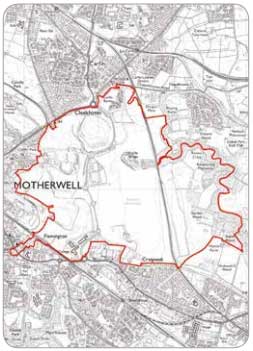
1 - Location: Former Ravenscraig steelworks and new transport and communication connections to it.
2 - Description of Classes of Development: Development situated at the location consisting of:
a. construction of buildings for business, general industrial or storage and distribution use where the gross floor space is or exceeds 10,000 square metres or with a site area which is or exceeds 2 hectares.
b. construction of residential buildings where the area of the
development site is or exceeds
2 hectares.
c. construction of new road(s) or fibre-optic cable(s) to the location where the length of the infrastructure exceeds 8 kilometres.
d. development of a new town centre.
3 - Designation: A development within one or more of the Classes of Development described in paragraph (2) (a) to (d) is designated a national development.
4 - Need: These classes of development within the location are needed to support the delivery of large-scale proposals as required in the regeneration of Ravenscraig, currently one of the largest areas of vacant and derelict land in Europe. Its redevelopment for a range of uses makes a significant contribution to addressing concentrations of vacant and derelict land in Central Scotland. It provides an opportunity to build in low carbon and environmental infrastructure.
2. STATEMENT OF NEED AND DESCRIPTION - Dundee Waterfront
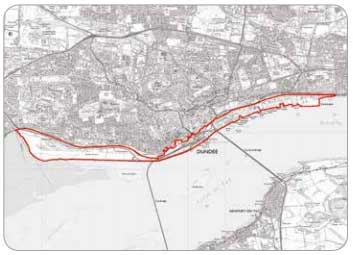
1 - Location: Dundee waterfront and new transport and communications to it.
2 - Description of Classes of Development: Development at the location consisting of:
a. construction of buildings for business, general industrial or storage and distribution use where the gross floor space is or exceeds 10,000 square metres or with a site area which is or exceeds 2 hectares.
b. construction of residential buildings where the area of the development site is or exceeds 2 hectares.
c. construction of new road(s), railway track(s) or fibre-optic cable(s) to the location where the length of the infrastructure exceeds 8 kilometres.
3 - Designation: A development within one or more of the Classes of Development described in paragraph (2) (a) to (c) is designated a national development.
4 - Need: These classes of development within the location are needed to support the delivery of large-scale proposals required for the transformation Dundee. This national development supports key economic growth sectors for the city, and will improve quality of place in one of Scotland's cities.
3. STATEMENT OF NEED AND DESCRIPTION - Carbon Capture and Storage Network and Thermal Generation
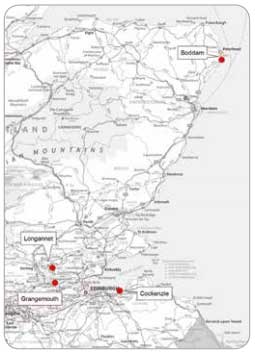
1 - Location: Carbon Capture and Storage Network Infrastructure, throughout Scotland. Thermal generation at Peterhead (Boddam), Longannet, Grangemouth and Cockenzie.
2 - Description of Classes of Development: Development at the locations consisting of:
a. construction of new or refurbishment of existing pipeline(s) exceeding 8 kilometres in length to provide for the transportation of captured carbon dioxide, including change of use from transporting existing substances.
b. construction of pumping and/or compression equipment required
for a carbon dioxide transportation pipeline(s) exceeding
8 kilometres in length.
c. construction of buildings or structures for carbon capture, transportation and/or storage plant and facilities where the gross floor area is or exceeds 10,000 square metres or the site area is or exceeds 2 hectares.
d. construction of new or refurbishments to thermal generation power stations with a generating capacity of over 50 megawatts where that development includes on site carbon capture plant to a level as required in the Electricity Generation Policy Statement, carbon transportation infrastructure and/or storage facilities.
e. construction of new or refurbishments to existing onshore gas pipelines to the thermal generation locations where the generation fuel is to be gas.
f. onshore and offshore carbon dioxide storage sites.
3 - Designation: A development within one or more of the Classes of Development described in paragraph (2) (a) to (f) is designated a national development.
4 - Need: These classes of development are needed to support the delivery of a carbon capture and storage network to establish Scotland as a centre of expertise in this technology. In line with the Scottish Government's Electricity Generation Policy Statement, these classes of development also support the achievement of a minimum of 2.5 gigawatts of thermal generation progressively fitted with carbon capture and storage technology. The aim is to demonstrate that carbon capture and storage is feasible at a commercial scale by 2020, with full retrofit across conventional fossil fuel power stations by 2025-30.
4. STATEMENT OF NEED AND DESCRIPTION - High Voltage Electricity Transmission Network
1 - Location: Throughout Scotland.
2 - Description of Classes of Development: Development consisting of:
a. new and/or upgraded onshore electricity transmission cabling
of or in excess of
132 kilovolts, and supporting pylons.
b. new and/or upgraded onshore sub stations directly linked to electricity transmission cabling of or in excess of 132 kilovolts.
c. new and/or upgraded onshore converter stations directly linked to onshore and/or offshore electricity transmission cable(s) of or in excess of 132 kilovolts.
d. new and/or upgraded offshore electricity transmission cabling
of or exceeding
132 kilovolts.
3 - Designation: A development within one or more of the Classes of Development described in paragraph (2) (a) to (d) is designated a national development.
4 - Need: These classes of development are needed to support the delivery of an enhanced high voltage electricity transmission grid which is vital in meeting national targets for electricity generation, statutory climate change targets, and security of energy supplies.
5. STATEMENT OF NEED AND DESCRIPTION - Pumped Hydroelectric Storage
1 - Location: Throughout Scotland.
2 - Description of Classes of Development: Development for pumped hydroelectric storage which would be or exceed 50 megawatts consisting of:
a. new and/or expanded and/or refurbished water holding reservoir and dam.
b. new and/or refurbished electricity generating plant structures or buildings.
c. new and/or expanded and/or refurbished pump plant structures or buildings.
d. new and/or expanded and/or refurbished water inlet and outlet pipework.
e. new and/or refurbished substations and/or transformers directly required for the pumped hydroelectric schemes which fall within the description.
f. new and/or replacement transmission cables directly linked to the pumped hydroelectric schemes which fall within the description.
3 - Designation: A development within one or more of the Classes of Development described in paragraph (2) (a) to (f) is designated a national development.
4 - Need: These classes of development are needed to support the strategic role of pumped hydroelectric storage within our electricity network by increasing the capacity through new or expanded sites. This promotes security of electricity supplies and will help to balance electricity demand with intermittency of some types of generation.
6. STATEMENT OF NEED AND DESCRIPTION - Central Scotland Green Network
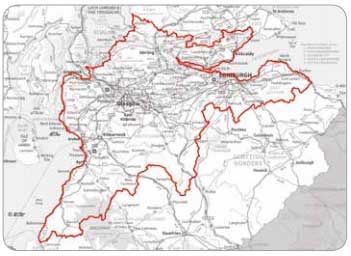
1 - Location: Local authorities throughout Central Scotland within the boundary identified by the Central Scotland Green Network Partnership.
2 - Description of Classes of Development: The project supports a wide range of environmental enhancement measures, including activities and initiatives that do not require development consent. In addition, the following development categories within the above locations are also included within the national development:
a. development of or exceeding 2 hectares on vacant and derelict land for sustainable drainage systems or allotments.
b. construction of new walking and cycling routes exceeding 8 kilometres.
3 - Designation: A development within one or more of the Classes of Development described in paragraph (2) (a) and (b) is designated a national development.
4 - Need: These classes of development support the delivery of a step change in the quality, accessibility, biodiversity and adaptability of the Central Scotland environment. Active travel projects will provide added value where they integrate with the national walking and cycling network and local authority core paths.
7. STATEMENT OF NEED AND DESCRIPTION - Metropolitan Glasgow Strategic Drainage Partnership
1 - Location: The areas of: East Dunbartonshire Council, East Renfrewshire Council, Glasgow City Council, North Lanarkshire Council, Renfrewshire Council, South Lanarkshire Council, West Dunbartonshire Council.
2 - Description of Class of Development: Development for surface water management within the locations consisting of:
a. works, structures, buildings and pipelines where the site area is or exceeds 2 hectares.
3 - Designation: A development within the Class of
Development described in paragraph
(2) (a) is designated a national development.
4 - Need: This class of development will contribute to the delivery of infrastructure required for water resource and drainage management on a broad scale within the Glasgow city region. The project will play a key role in adaptation to climate change, and provide an exemplar of catchment-scale planning and management.
8. STATEMENT OF NEED AND DESCRIPTION - National Long Distance Cycling and Walking Network
1 - Location: Throughout Scotland.
2 - Description of Class of Development: The network will include enhancements to a number of routes which do not require planning consent. These are set out in the NPF3 action programme. In addition the following specific proposals are included within the national development.
a. New and improved routes and links for walking and cycling which are likely to need planning permission:
Cycleways
Route 73 (north) of the National Cycle Network - Brodick to
Corrie
Route 753 of the National Cycle Network - Gourock-Ardrossan:
Largs to Inverkip (up to 15km new traffic free & on road route)
In and around Fairlie (up to 10km of new traffic free route)
Route 76 of the National Cycle Network - Manor Powis
Roundabout (2km of new traffic free route to avoid major roundabout
on A91/A905)
Route 765 of the National Cycle Network - Stirling to
Callander: Doune-Burn of Cambus (5km of new traffic free route + 2
bridges)
Southern Upland Cycle Way: Stranraer to Portpatrick (10km of
new traffic routes at various locations, road crossings and traffic
calming)
Long Distance Routes
Clyde Walkway extension: New Lanark to Biggar
(20km of path creation and improvements)
Crook of Devon to Kinross (10km of path creation and
improvements)
Cross-Scotland Pilgrim Way: Tyndrum to Crieff section; Glen
Ogle to Tyndrum (40km of path creation and improvements)
Darvel - Muirkirk (20km of path creation and improvements)
John Muir Way: Strathblane to Glasgow spur (15km of path
creation and improvements)
North Solway Coastal Route: Drummore to Portpatrick (20km of
path improvements)
Speyside Way Extension: Aviemore to Newtonmore: (8km of path
creation and 1 bridge)
3 - Designation: A development within the Class of
Development described in paragraph
(2) (a) is designated a national development.
4 - Need: This class of development will help deliver a strategic national network of walking and cycling routes. The routes included above have been identified for the initial phase of the network, and will make best use of existing path infrastructure. The network will significantly improve visitor experiences and increase tourism within Scotland. It will be a key asset for increasing physical activity and will support active travel. The network will be supported by and will support core path plans and community path networks, transport hubs and strategic tourism and recreation destinations in Scotland as well as settlements.
9. STATEMENT OF NEED AND DESCRIPTION - High Speed Rail
1 - Location: Central and Southern Scotland to the border with England.
2 - Description of Classes of Development: Development within the location consisting of:
a. the construction of new and/or upgraded railway track and electrification solution (overhead cabling and pylons or on track) for the purpose of delivering High Speed Rail.
b. the construction of new and/or refurbished multi-modal railway stations to service the high speed rail lines.
3 - Designation: A development within one or more of the Classes of Development described in paragraph (2) (a) and (b) is designated a national development.
4 - Need: The classes of development support the development of a high speed rail network to Scotland. This aims to provide a more efficient, lower carbon travel option to connect Scotland with London. A link between Edinburgh and Glasgow as an initial phase would realise early benefits from the project, and aims to release capacity on the existing rail network serving cities north of the Central Belt.
10. STATEMENT OF NEED AND DESCRIPTION - Strategic Airport Enhancements
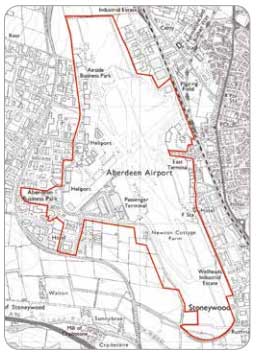
1 - Location: Glasgow Prestwick Airport, Glasgow International Airport, Edinburgh Airport, Aberdeen Airport, Inverness Airport; adjoining land identified for mixed, industrial and business use at Edinburgh, Glasgow and Prestwick Airports.
2 - Description of Classes of Development: Development at the locations consisting of:
a. any extension of the site boundary of the airport for airport operational uses as identified in a current airport masterplan that is supported by the development plan for the area.
b. new and/or expanded terminal buildings where the gross floor
space exceeds 10,000 square metres or the development is or exceeds
2 hectares.
c. construction of buildings for business, general industrial or storage and distribution use requiring a near airport location where the gross floor space is or exceeds 10,000 square metres or the development is or exceeds 2 hectares in the area identified for associated business development at Edinburgh, Glasgow and Prestwick Airports.
d. new National Showground facilities south of the A8 where the gross floor space is or exceeds 10,000 square metres or the development is or exceeds 2 hectares.
e. construction of new walking and cycling routes exceeding 8 kilometres.
f. construction of surface water management schemes where the area of development would exceed 2 hectares.
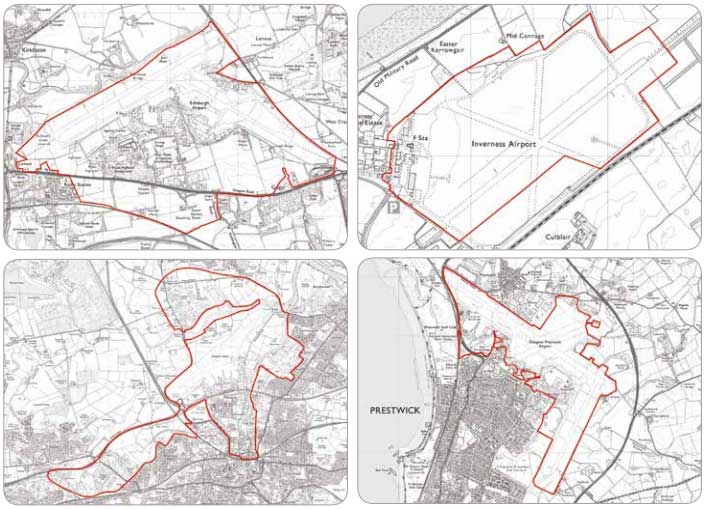
3 - Designation: A development within one or more of the Classes of Development described in paragraph (2) (a) to (f) is designated a national development.
4 - Need: These strategic airports act as national gateways to and from Scotland. These classes of development support the key gateway and hub function of the airports. All the airports identified have published masterplans for their development - development proposals vary between the airports. Areas adjacent to Glasgow and Edinburgh Airports have been identified for commercial and mixed uses supporting the economic development opportunities which are particularly suited to these locations. At Edinburgh provision is also made for the re-location of the Royal Highland Showground, and ensuring that the major land users in the area continue to have a co-ordinated approach to development.
11. STATEMENT OF NEED AND DESCRIPTION - Grangemouth Investment Zone
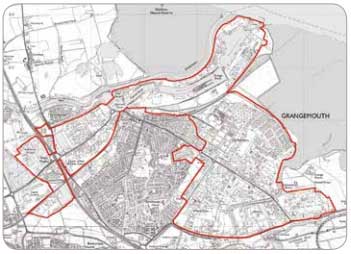
1 - Location: The Port of Grangemouth, the adjacent chemicals business area identified by the Development Plan for Falkirk and access routes to the area.
2 - Description of Classes of Development: Development consisting of:
a. construction of a new freight handling facilities where resultant building or structure is or exceeds 10,000 square metres, or the area of development is or exceeds 2 hectares.
b. construction of a new building or structure for business and/or general industrial uses where the resultant building or structure is or exceeds 10,000 square metres, or the site area is or exceeds 2 hectares.
c. construction of flood defence structures and/or the undertaking of works for flood defence within the location where the area of development is or exceeds 2 hectares.
d. the construction of new and/or replacement roads to provide an improved road connection and junction between the location and the M9 motorway where the resultant roads, including motorway junctions exceed 8 kilometres.
e. the construction of new and/or replacement roads to provide an improved road connection and junction between the location and the M8 motorway where the resultant roads, including motorway junctions exceed 8 kilometres.
f. the construction of new/and or replacement railway track to and within the location to provide an enhanced railhead for freight handling purposes.
3 - Designation: A development within one or more of the Classes of Development described in paragraph (2) (a) to (f) is designated a national development.
4 - Need: The classes of development are needed to support the key infrastructure and industry at the Grangemouth Investment Zone, strengthening its nationally important role in freight handling, providing energy-related infrastructure and facilitating wider economic activity. There is a continuing need for a co-ordinated approach to development in this area to minimise impacts on the community and environment.
12. STATEMENT OF NEED AND DESCRIPTION - Freight Handling Capacity on the Forth
1 - Location: Existing and disused ports and harbours on the Forth Estuary and transport access to them.
2 - Description of Classes of Development: Development consisting of:
a. the construction of new and/or expanded multi-modal container freight handling facilities where the resultant building or structure is or exceeds 10,000 square metres, or the area of development is or exceeds 2 hectares.
b. the construction of new and/or replacement road infrastructure exceeding 8 kilometres connecting existing road networks to the freight handling facility.
c. the construction of new and/or upgraded railway track exceeding 8 kilometres connecting existing networks to the freight handling facility.
3 - Designation: A development within one or more of the Classes of Development described in paragraph (2) (a) to (c) is designated a national development.
4 - Need: These classes of development are required to support continued demand for freight handling facilities to service North Sea freight shipping routes. Potential sites around the Firth of Forth are in close proximity to a large share of Scotland's population, and are accessible from transport routes to allow for onward transport of freight.
13. STATEMENT OF NEED AND DESCRIPTION - Aberdeen Harbour
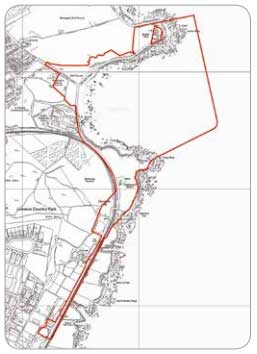
1 - Location: Nigg Bay.
2 - Description of Classes of Development: Development at the location for:
a. the construction of new and/or replacement harbour facilities
where the resultant building or structure is or exceeds 10,000
square metres, or the area of development is or exceeds
2 hectares.
b. the construction of new and/or replacement road infrastructure from existing networks.
c. the provision of water supply and related infrastructure directly for new harbor facilities.
3 - Designation: A development within one or more of the Classes of Development described in paragraph (2) (a) to (c) is designated a national development.
4 - Need: These classes of development support the expansion of Aberdeen Harbour. Current constraints will increasingly limit the ability of the harbour to provide crucial services and limit opportunities for business growth at this nationally important facility. Nigg Bay has been identified as the preferred development option, due to the constraints of the existing sites.
14. STATEMENT OF NEED AND DESCRIPTION - National Digital Fibre Network
1 - Location: Throughout Scotland.
2 - Description of Class of Development: Development which consists of:
a. the construction of new broadband cabling where the length of
the cabling exceeds
8 kilometres.
3 - Designation: A development within the Class of
Development described in paragraph
(2) (a) is designated a national development.
4 - Need: These classes of development support the delivery of enhanced digital infrastructure in Scotland which is vital for continued sustainable economic growth. The Highlands and Islands Area will form a focus for development.
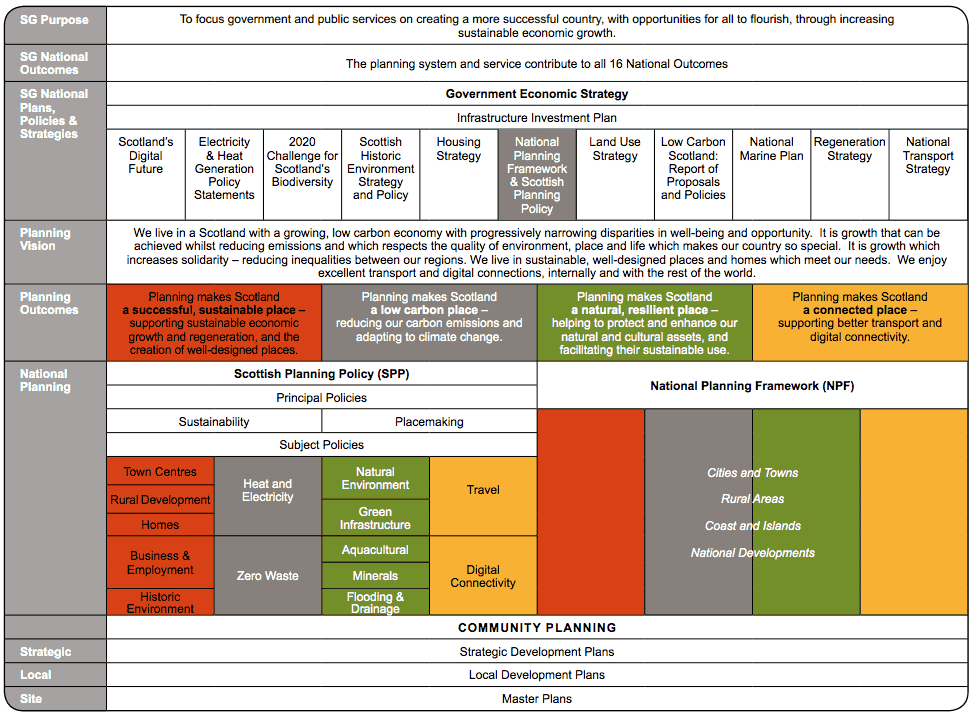
2014
- Year of Homecoming
- National Marine Plan
- National Conservation Centre
- Forthside
- Sectoral Marine Plans for
- renewable energy
- Scotland Heat Map and local
- heat datasets
- Heat Generation Policy Statement
- Marine Protected Areas
- National Peatland Plan
- Edinburgh Trams operational
2015
- South Glasgow Hospitals
- Inverness College
- Equivalent of 50% of electricity
- consumption from renewable energy
- Energy Generation Policy Statement
- DECC Carbon Capture and Storage
- Commercialisation Project final
- investment decision
- 2nd round of River Basin
- Management Plans
- National Flood Risk
- Management Strategies
- 85% of properties to have next
- generation broadband (2015/16)
- Borders Railway
- Glasgow Fastlink
2016
- NPF3 Monitoring Report
- 30,000 affordable homes delivered
- 2011-2016
- V&A at Dundee
- City of Glasgow College
- Ayrshire College
- National Performance Centre for Sport
- Heriot Watt
- Acute Mental Health and North
- Ayrshire Community Hospital
- Climate Change - 3rd Report on
- Policies and Proposals (RPP3)
- 2nd Land Use Strategy
- Local Flood Risk Management Plans
- Well-managed network of Marine
- Protected Areas
- Queensferry Crossing complete
- Edinburgh-Glasgow via Falkirk
- rail electrification
2017
- Narrow the gap in economic
- participation between best and worst
- performing regions
- Grow exports by 50%
- Royal Hospital for Sick Children/
- Department of Clinical Neurosciences
- Edinburgh
- 95% of premises to have access to
- next generation broadband (2017/18)
- M8/M73/M74 improvements complete
2018
- Scotland's Schools for the Future
- Investment Programme complete
- NHS Dumfries and Galloway
- Royal Acute Services
- Aberdeen Western
- Peripheral Route
- A90 Balmedie to Tipperty
- dualling
- Dunblane-Stirling-Alloa rail
- electrification
2019
- NPF4
- Glasgow Subway
- modernisation complete
- Edinburgh-Glasgow Rail
- Improvements (EGIP)
- Phase 1 complete
2020
- 500 MW of renewable energy locally or
- community-owned
- Marine finfish production at 210,000 tonnes
- p.a.
- Shellfish production from aquaculture at
- 13,000 tonnes p.a.
- 12% reduction in energy consumption
- 42% reduction in greenhouse gas emissions
- Equivalent of 100% of electricity consumption
- from renewables
- 30% of overall energy demand from
- renewables
- 11% of heat demand from renewables
- 10% of transport fuels from renewables
- At least 70% of waste to be recycled
- Scotland fully contributing to meeting UN
- Aichi goals and targets for biodiversity
- Begin development of 3rd round of River
- Basin Management Plans
- World class digital infrastructure established
- across all of Scotland
- Step change in energy efficiency of homes (2030)
- Largely decarbonised electricity sector (2030)
- Significant progress to decarbonise heat sector in
- Scotland (2030)
- 80% reduction in greenhouse gas emissions
- (2050)
- Largely decarbonised heat sector in Scotland
- (2050)
- 90% of water bodies at good ecological status
- (2027)
- A9 Perth to Inverness dualling complete (2025)
- Highland Main Line Rail Improvements Project
- scheduled completion (2025)
- Significant progress in decarbonising transport
- sector (2030)
- Aberdeen to Central Belt rail improvements
- complete (2030)
- A96 Aberdeen to Inverness dualling complete
- (2030)
- Aberdeen to Inverness rail improvements
- complete (2030)
- High Speed Rail to London complete (post 2032)
- Vehicle emissions largely eliminated (2050)
Photograph credits
Chapter 1 (1) © The Steve Tiesdell Legacy Image Collection
Chapter 1 (3) © Lorne Gill/
SNH
Chapter 1 (4) © Smith Scott Mullan
Chapter 1 (5) © Lorne Gill/
SNH
Chapter 2 (3) © Development & Regeneration Services,
Glasgow City Council
Chapter 2 (4) © Mactaggart and Mickel
Chapter 2 (5) © Courtesy of People Make Glasgow
Chapter 2 (2) © Courtesy of People Make Glasgow
Chapter 2 © Clyde Gateway/Andrew Lee
Chapter 2 (2) © George Logan/
SNH
Chapter 2 © AREA
Chapter 2 © Crown Copyright reproduced courtesy of
Historic Scotland.
www.historicscotlandimages.gov.uk
Chapter 2 (2) © Lorne Gill/
SNH
Chapter 2 © Dundee City Council
Chapter 2 (2) © Aberdeen Harbour
Chapter 2 © Aberdeen Civic Society
Chapter 2 © P&A Macdonald/
SNH
Chapter 2 (1) © University of Glasgow
Chapter 2 (2) © East Ayrshire Council
Chapter 2 (3) © MAKAR
Chapter 2 (4) © East Lothian Council
Chapter 2 (5) © Rhona Dent
Chapter 2 (1) © Elaine McCall
Chapter 2 (3) © Phil Gilmour
Chapter 2 (4) © John Carolan
Chapter 2 (1) © Zvonko Kracun
Chapter 2 (2) © Elaine McCall
Chapter 2 (3) © P&A Macdonald/
SNH
Chapter 2 (5) © West Dunbartonshire Council
Chapter 3 (1) © John Gilbert Architects
Chapter 3 (2) © Tony Gorzkowski/White House Studios
Chapter 3 (3) © Graham Marchbank
Chapter 3 (4) © Lorne Gill/
SNH
Chapter 3 (1) © Graham Marchbank
Chapter 3 (2) © Graham Marchbank
Chapter 3 (3) © Central Scotland Green Network Trust
Chapter 3 (4) © ScottishPower
Chapter 3 (5) © Lorne Gill/
SNH
Chapter 3 (1) © Clackmannanshire Council
Chapter 3 (2) © Aquamarine Power
Chapter 3 (3) ©
SSE
plc
Chapter 3 (4) © P&A Macdonald/
SNH
Chapter 4 (1) © Lorne Gill/2020VISION
Chapter 4 (2) © Katrina Martin/2020VISION
Chapter 4 (3) © James Murray
Chapter 4 (4) © Mactaggart and Mickel
Chapter 4 (5) © Crown Copyright reproduced courtesy of
Historic Scotland.
www.historicscotlandimages.gov.uk
Chapter 4 (1) © Lorne Gill/
SNH
Chapter 4 (3) © beckyduncanphotographyltd/
SNH
Chapter 4 (4) © Lorne Gill/
SNH
Chapter 4 (5) © Chandra Prasad/Sustrans
Chapter 4 (1) © Central Scotland Green Network Trust
Chapter 4 (2) © Phil Gilmour
Chapter 4 (3) © AB Images Scotland
Chapter 4 (4) © Lorne Gill/
SNH
Chapter 5 (3) © Mulholland Media
Chapter 5 (4) © Aberdeen Harbour
Chapter 5 (1) © West Dunbartonshire Council
Chapter 5 (3) © Dennis Hardley photography.
www.scotphoto.com
Chapter 5 (4) © Phil Gilmour
Chapter 6 (1) © Dundee City Council
Chapter 6 (2) © Ravenscraig Ltd.
Chapter 6 (3) © ScottishPower
Chapter 6 (4) © P&A Macdonald/
SNH
Chapter 6 (1) © Wireframe3D
Chapter 6 (2) © Jon Curnow
Map credits
For all maps - Reproduced by permission of Ordnance Survey on
behalf of
HMSO.
© Crown copyright and database right (2014).
All rights reserved.
Ordnance Survey Licence number 100024655
For all strategy maps - © O Street Ltd. 2013
Contact
Email: Dr Fiona Simpson
There is a problem
Thanks for your feedback